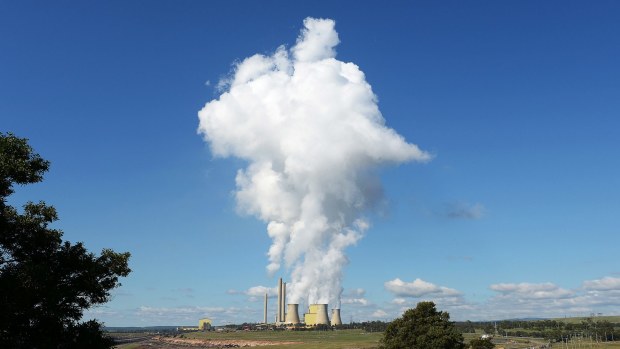Opinion
Coal is now on the defensive
Brian TooheyThere's a good reason why AGL wants to keep its Loy Yang A power station in Victoria open for many more years and an equally good one why it wants to close its station at Liddell in NSW. Loy Yang is highly profitable, thanks in part to de facto subsidies. Liddell is profitable for now, but is clapped out, which is why AGL wants to convert the site to renewables which will be more competitive even without subsidies down the track.
The story of the two sites illustrates how government support for coal-fired generators can be crucial to profitability. When AGL bought out Loy Yang A's minority owner in February 2012, this surprised many observers because the then Labor government was about to impose a carbon tax starting at $23 a tonne.
However, The Australian Financial Review reported at the time that Citigroup advised AGL that the power plant would remain Australia's lowest cost operator even with a $50 a tonne carbon tax. Now the there is no carbon tax it will be even further ahead, especially as brown coal stations are much bigger greenhouse gas emitters than those using black coal let alone natural gas.

Loy Yang A still has a head of steam behind it. Carla Gottgens
When the Kennett government privatised Victoria's power stations in 1995, they came with the big bonus of including on-site brown coal mines with effectively no royalty payments. A new rate of around 7¢ a gigajoule of contained energy was introduced in 2005. The Andrews government increased this to about 23¢ in 2016. It won't give a per tonne figure, but around $2 is a common estimate.
By any standard, this is a remarkably low figure that indicates Victorian taxpayers are getting a very poor return on selling the right to exploit this resource. Loy Yang's stunning profitability also illustrates that the sale price of the time of privatisation severely undervalued the asset.
AGL got a good deal when it bought Liddell. However, in contrast to Loy Yang, it never made financial sense to extend its life beyond 2022.
The coal industry correctly points out that solar and wind power benefit from subsidies built into the renewable energy target and feed-in-tariffs for the grid. But fossil fuels also gain from government help. Queensland is heavily subsidising the proposed Adani coal mine. The federal government provides other assistance, including generous fuel excise tax credits that cost the budget about $7 million a year, a significant proportion of which goes to coal miners.
Coal also benefits from a lack of any impost to takes account of the environmental and health damage caused by carbon dioxide and other gases released when fossil fuels are burnt in a generator. The justification for including these costs has been part of mainstream economics ever since the Cambridge economist Arthur Pigou first proposed in doing so in 1920.
There is plenty of room to dispute how much taking account of this factor would add to the full cost of coal. But there is little doubt that the trend is clearly towards renewables becoming cheaper than coal-fired power even without a Pigovian tax.
On Tuesday, the reneweconomy online site reported that leading analysts calculated solar combined with batteries was already cheaper than the grid for most customers in South Australia and it wouldn't be long before this was the case in other states. Similar considerations apply to wind turbines with batteries. In the case of rooftop solar with batteries, this allows consumers to become more independent of the grid and avoid blackouts when bush fires and storms damage power lines or fossil fuel generators breakdown. The Australian Energy Market Operator expects this type of localised generation and storage to supply a much higher proportion of demand in future years.
But the Turnbull government seems desperate to keep Liddell open. It is even signalling it might offer government subsidies. AGL clearly has nothing of against using coal when profitable, but it has calculated it makes more sense in this case to go with a mix of renewables, peaking gas generators and small-scale pumped hydro on a site that's already connected to the group.
It's time the Turnbull government got out of the way and recognised that coal can continue to fight against the advance of renewables, but can never win the battle as the cost gap widens.
Subscribe to gift this article
Gift 5 articles to anyone you choose each month when you subscribe.
Subscribe nowAlready a subscriber?
Introducing your Newsfeed
Follow the topics, people and companies that matter to you.
Find out moreRead More
Latest In Economy
Fetching latest articles